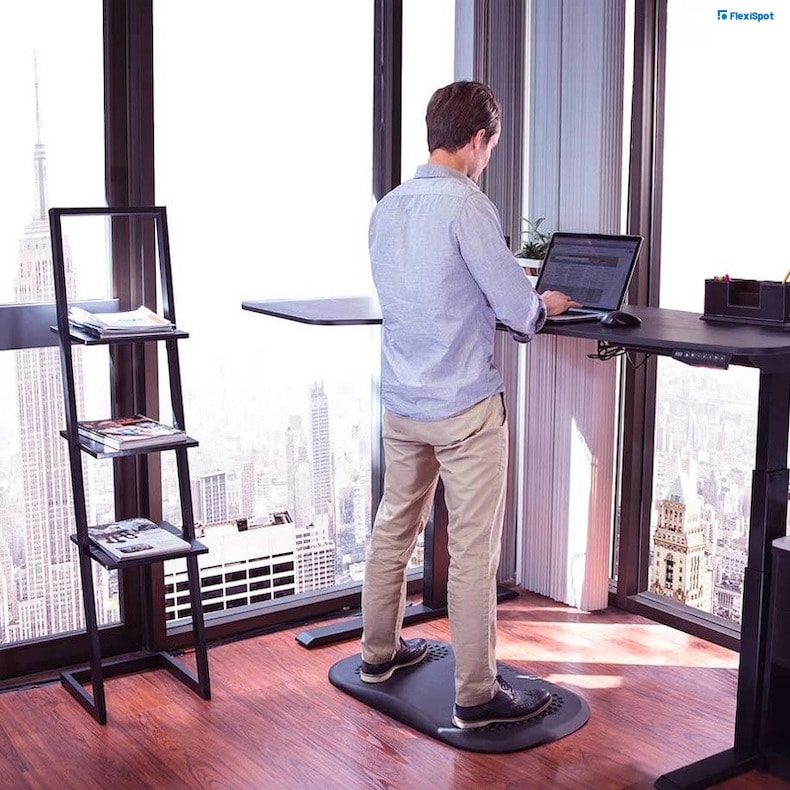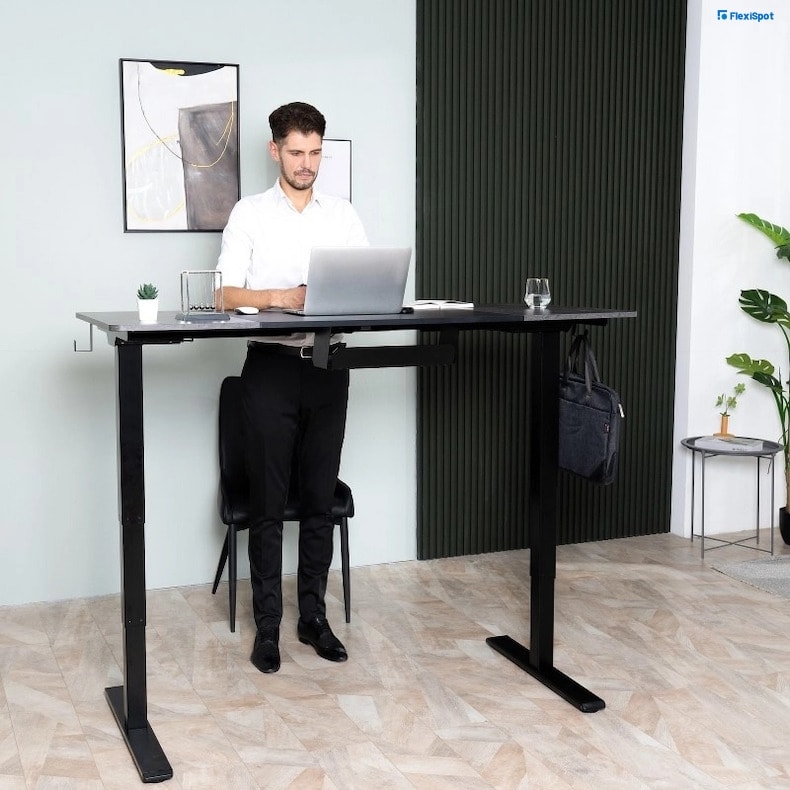Everybody has experienced a mental slowdown as the day winds down. During the late noon, after an especially long day at work, we can't help but feel lethargic. This sensation has a rational scientific justification. According to studies, extended sitting or a sedentary lifestyle causes the medial temporal lobe, which houses the hippocampus and is crucial for memory and learning, to be thinner.
The research demonstrates that consistently getting up and moving about will enhance your cognition. According to Richard Friedman, a clinical psychiatry professor at Weill Cornell Medical College said "you don’t even have to move much to enhance cognition; just standing will do the trick.”
The study participants were split into two groups. One of them was required to complete the test whereas the other one was seated. The "Stroop" test, which measures selective attention, was administered. Examples of questions include those that challenge you to identify a color while presenting contradictory cues, like the word "green" written in blue ink. You are aware of the outcomes. Standing individuals outperformed seated individuals by a 32-millisecond margin.
And this is probably one of the primary reasons why standing workstations are popular. Using standing desks, which perpetuates sedentary office practices that are bad for one's health in the long term, is strongly linked to helping people live healthier lifestyles.

Regular daytime standing has a lot of advantages. It will improve your metabolic rates, controlling the burn of calories and the flow of blood if you practice it at regular intervals. But it's crucial to remember that standing is not a substitute for exercise. Even so, it is sufficient to eliminate or at the very least lessen the dangers of extended sitting. Additionally, standing workstations improve memory and other cognitive abilities by promoting brain activity.
Another study examined the effects of employing standing desks in place of chairs in the setting of a high school classroom. These students took two examinations with four computerized assessments over the academic year that measured executive functions such as cognitive abilities, problem-solving abilities, task-handling abilities, and the use of various strategies to accomplish goals. In any setting, including the classroom or the office, problem-solving depends on strong executive functioning.
It was hypothesized that standing workstations would be able to offer the same health advantages as exercise regimens, including strengthening brain function by boosting blood flow. Standing desks increased neurocognitive function, which was in accordance with the results of other studies on school fitness programs, and the scientists were thrilled with their discovery.
The purpose of the following study was to directly compare the neurocognitive advantages of standing desks with those of school-based fitness programs.
The Advantages of Standing Desks for the Brain
Doctors and journalists sought to learn how standing workstations affected mental faculties since the physical benefits were already clear. They redirected their attention to standing desk use's advantages for cognition.

1. Standing Desks Can Boost Cognitive Function
According to a study from Brain, standing up has advantages for better cerebral circulation in the midbrain, visual association cortex, and posterior and anterior vermis. This study was published by the Oxford University Press. This component is responsible for providing the brain with nutrients, oxygen, and blood. Standing promotes blood flow by bringing about healthier, more controlled blood sugar levels, which has a favorable impact on memory. When standing as opposed to sitting, blood glucose levels rise and the hippocampus is compromised, which eventually results in a loss in cognitive performance.
According to the study, using a standing workstation provides enough physical activity to enhance cognitive function over time.
According to a study, aging causes some brain regions to shrink. For individuals without dementia, the hippocampus shrinks by one to two percent annually. However, those who engage in moderate physical exercise are likely to have a two percent growth in hippocampal size.

2. Increased Efficiency and Alertness
In fact, stand-up desks significantly improve the working environment. Productivity is increased, and metabolism is also improved.
There are fewer odds of experiencing a headache that can interfere with one's work when the flow of blood is at a healthy rate.

3. Collaborative workspaces for wider intellectual capacity
When you collaborate with numerous other minds, achieving goals is simpler. This is what is known as collective intelligence, which eliminates the need for office silos and encourages people to work together to create useful knowledge. Collective intelligence paves the way for businesses to make decisions that are more informed. Collaborative work environments have gained increased traction in recent years, partly for this reason. Large corporations like Apple, Google, Facebook, and Pixar have all embraced it to promote effective group communication that sparks creativity among all parties.

What happens to the brain when you sit down?
At the University of California, Los Angeles, Dr. Prabha Siddarth conducted research that showed sedentary behavior decreases the thickness of the medial temporal lobe, a part of the brain that houses the hippocampus, which is important for learning and memory.
t35 healthy adults between the ages of 45 and 70 took part in the study. They were asked questions with regard to their level of activity, including the amount of time they spend to sit each day, and then underwent an MRI brain scan. The findings showed that people who sat down for extended amounts of time had thinner medial temporal lobes than people who sat down for shorter periods of time during the day.
People who were fit and healthy did not significantly vary from people who were not. The authors appeared to infer from this result that exercise alone isn't all that effective in protecting against the harmful consequences of prolonged sitting.
Final Word
To be in support of standing workstations over ordinary desks has grown in popularity, and research now supports this position as being the healthiest option. Studies have shown that it can improve most people's cognitive abilities. Everything must, however, be further researched. It is yet too early to say whether standing desk use can help employees in the long run because this is the first time that scientific research has linked it with a change in cognitive performance. To convince the people that going to stand up does indeed increase brain function, we propose more studies with more conclusive findings.
